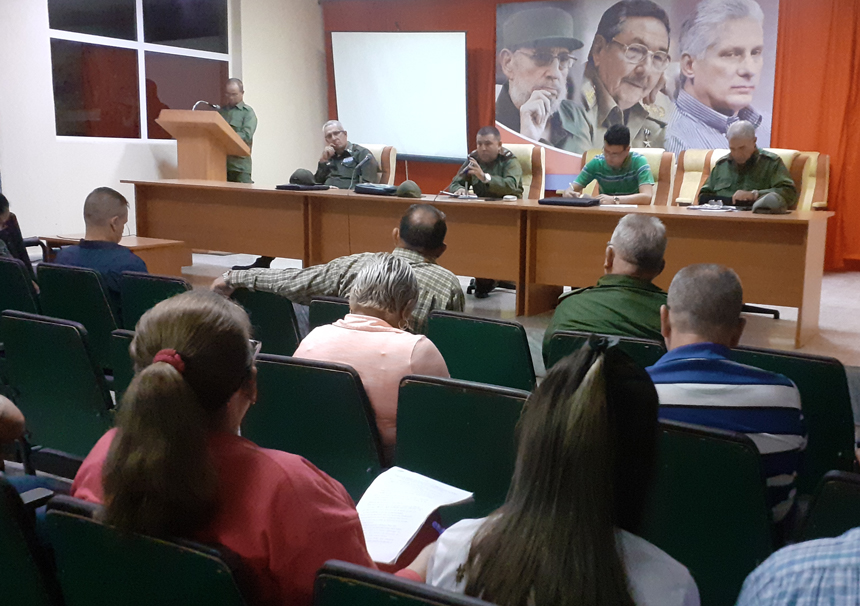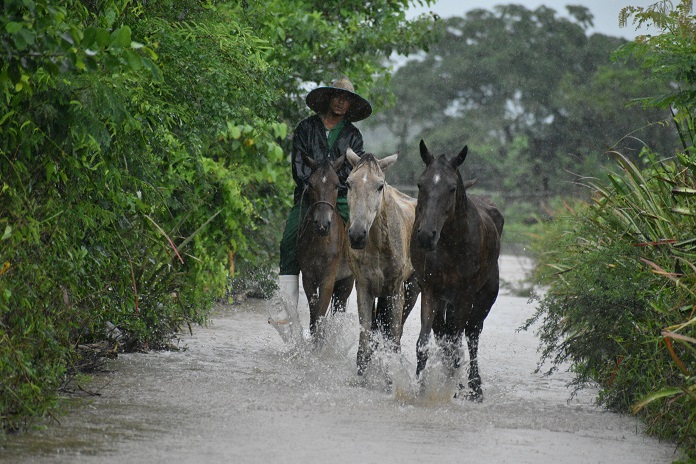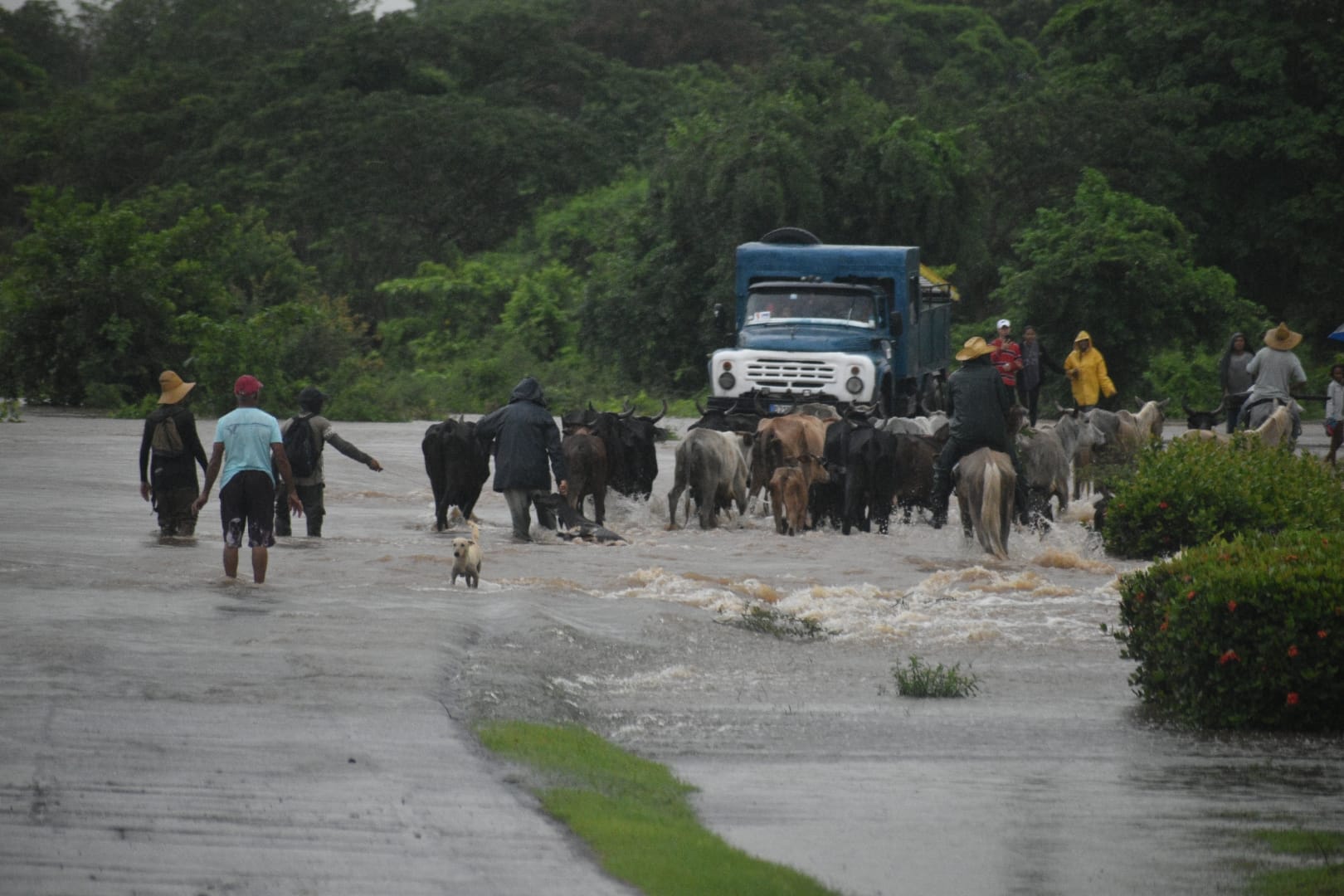
From Friday afternoon, June 9, the Provincial and Municipal Defense Councils were activated throughout the Las Tunas territory, due to the large floods caused by the intense rains that occurred until this Saturday morning.
Las Tunas, Cuba.- "Since yesterday afternoon, the president and vice president of the Provincial Defense Council (CDP) have been visiting the municipalities in the south of the province, and due to the complex situation, it was decided to activate the defense zones and release the People's Power delegates who will not hold service positions to support the work in the communities, reported Williams Ramírez Pérez, a member of the CDP leadership.
"All measures are aimed at protecting the population, we already have 1,122 people evacuated, a number that could be higher, but many refuse to leave their homes."
Regarding the weather conditions, Alexei Moreno Borges, an expert from the Provincial Meteorological Center, explained that starting this Saturday there will be some improvement in; the sun may even come out at some time. "But at the end of the afternoon and the night the conditions are again conducive to rain, showers, and electrical storms," he warned.
"In the city of Las Tunas, during the night, 49.2 millimeters of water fell. On normal days, the rain gauges report every 24 hours; in exceptional situations, such as yesterday, the report is arriving every 4 hours, to be able to make known to the population and the authorities the exact parts that contribute to taking adequate measures.
The models, the expert said, indicate that there will not be significant accumulations, but the rains will persist. Moreno Borges insisted that the danger not only comes from the rainfall that falls on the province but also from the runoff in neighboring territories, such as Camagüey.
To corroborate the report from the Meteorology Center, Mirtha García Reyes, delegate of Hydraulic Resources, reported that at the time the rains began, only one reservoir in the province was relieving. “Now there are nine,” she said. Cayojo and El Rincón raised their water levels rapidly, she added.
Until that moment, the Las Tunas reservoirs were at 61 percent of their capacity, on average. The largest dam in the province, Juan Sáez, was below 30 percent of its capacity.
The measures to be taken were indicated by the head of the Civil Defense of the Las Tunas Military Region, Lieutenant Colonel Elfio Martí Beatón, who pointed out the main actions directed by the head of the Provincial Defense Council to face the effects of the heavy rains.

"It is necessary to continue strengthening the protection of agriculture and taking livestock to high areas; in addition, continue with the harvest of crops that are possible to resupply agricultural markets."
"It is also necessary to maintain the protection of state institutions and resources, and to continue the evacuation whether or not in family homes; as well as to ensure the presence of doctors in the offices because of the rains people are making it more difficult to go to hospitals or polyclinics."
The Lieutenant Colonel said that relevant health services such as hemodialysis treatments must be guaranteed. "Also, he pointed out, special attention should be paid to the situation of people with reduced mobility or bedridden, residing in areas at risk of flooding."
In this regard, Viviana Gutiérrez Rodríguez, director of Health in the province, pointed out that external consultations and surgical interventions were suspended. "At Amancio’s hospital, surgical medical assistance is assured, including blood, sutures, and all the accessories they may need."
In the 122 Family Doctor's Offices located in flood areas, doctors and nurses are ready for any contingency that might arise.
"We have 547 beds in provincial hospitals; the technical status of the generator sets was also verified, and the computerized means were preserved. We have 12 ambulances working, all protected, the lines of attention to the population were activated, and the transfers of patients were reinforced. the medical guard to the places.
"In the same way, we maintain surveillance of the evacuation centers in all places. Full-term pregnant women in the flooded areas were transferred to maternity homes and hospitals."

Aida Rosa Rodríguez, the coordinator of Programs and Objectives of the provincial government, said that since yesterday afternoon, more than 700 hectares of land were damaged, and more than 5,000 head of cattle have been moved to safer places.
“Amancio” was ready for the harvest and the river took it all away, which puts them in an early stage. Milk is another issue that is being treated, tractors are being sent to places that dairy trucks cannot enter."
Ernesto Luis Cruz Reyes, vice governor, made a call to the gastronomy sector, "we must create spaces and prepare food to take away so that we ensure the sale of food. There are communities without electricity and that's where you have to take the food.
"You must contact the administrators of the warehouses to avoid criminal acts, resources are scarce; there are people who take advantage of these circumstances and thefts happen, for this reason, we must protect the resources of the State, and much more the food of the population.”
Be careful with biohazard waste, is the call made by the Science, Technology, and Environment (CITMA) delegate here, Gisela Olano Felipe, who insisted on the need for risk management centers to use the tools they have in their hands like hazards, vulnerabilities, and risk studies.






